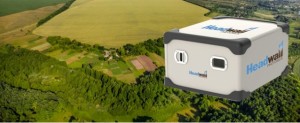
Catering to almost 72 million passengers in 2019, Amsterdam’s Schipol Airport is regarded as the 11th busiest airport in recent times and is also considered to be the second largest in terms of hub connectivity. As the main airport of the Netherlands, Schipol Airport originally used GIS (Geographic Information System) in 1985; ArcGIS Enterprise is the core technology in its business processes. In 2017, Schiphol Airport initiated a capital improvement program that involved major renovation of existing facilities, construction of newer sections and expansion in terms of passenger capacity. Once a considerable number of digital assets were created under this program, Schiphol Airport created its own Digital Twin. This Digital Twin gives the airport an opportunity to run simulations on potential operational failures throughout the entire complex, which is proving to be economical, both in terms of time and money.
The Digital Twin, also known as the Common Data Environment (CDE), primarily involves assembling and integrating Business Information Modeling (BIM) data with GIS data, along with data collected in real time on project changes and incidents, as well as financial information, documents and project portfolios. CDE also collects and processes data from more than 80,000 remote sensors that are installed all over the 7,000 acre airport complex, both indoor and outdoor, and uses it in predictive maintenance.

The construction data provided by the contractors in Industry Foundation Classes (IFC) format, an open file format for standardizing data, is used for Business Information Modeling (BIM). Every minute detail of the structure, starting from the geometric design elements to information related to construction work, is captured in BIM. This information-rich model enables the analysis of design options and helps create desired visualisations. The ArcGIS Data Interoperability extension, which is an integrated spatial ETL (extract, transform, and load) toolset that runs within the geoprocessing framework of Safe Software’s Feature Manipulation Engine (FME) technology, is used to process this BIM data and is subsequently converted to scene layers that can be viewed with the ArcGIS API for JavaScript. These web scene layers are cached web layers optimized for displaying large volumes of 3D data in a browser. Using this process the 3D Schiphol Urban View is generated, which gives managers, technicians, contractors, and other stakeholders a detailed view of the current status of construction. It also functions as a dashboard that is proving to be beneficial for the asset management process. It can also use attribute data from other systems and display real time asset data. Schiphol’s Development Operations team is planning to create historic and planned construction views in the future that will enable the stakeholders to witness the entire development process of the airport.

The CDE is incorporating smart components that are capable of interacting with each other and reporting operational status in real-time, so that even one single change in one component can be detected by other components immediately and reflected in the model. Different automated passenger and freight systems, such as escalators, conveyor belts and ticketing machines, are monitored by an Asset Control Signalling and Monitoring (ACSM) implementation system within Schiphol’s Supervisory Control and Data Acquisition (SCADA) system. These systems continuously check the status of the multitude of servomotors, circuit boards, and mechanical devices that comprise these systems. The CDE also maintains their maintenance history and monitors the systems’ programmable logic controllers. This allows components of the system, such as a belt or a motor, to turn off automatically in times of malfunctioning. Additionally, it also generates a work order and assigns a maintenance crew to fix problems immediately, saving considerable amount of time.
Schiphol Airport is using IBM Maximo asset management software for asset registration and maintenance. The primary advantage of using this software is its offline functionality that supports the crews working underground, in elevator shafts or in other remote spots. Importing asset information from the 3D BIM model into Maximo enables every subcontractor to take a virtual walk-through of the 3D model of the airport featuring all of its assets. This, in turn, helps facilitate maintenance work and encourage a more collaborative work environment by providing all the stakeholders a comprehensible picture of the location of specific sections of any asset.
Schiphol has also designated Veovo’s BlipTrack technology as its indoor traffic monitoring system. BlipTrack sensors help detect a passenger’s wireless device and its unique ID number is time-stamped and encrypted. As the device passes by multiple sensors, the system measures travel times and movement patterns which, in turn, enable it to provide both real-time and historic information about queue times, occupancy numbers and flow patterns to airport management, contributing to maintaining a safe and secure environment.
Reality Capture technology is playing a major role in the expansion of Schiphol Airport. The Dutch surveying company 4Indoor used NavVis Reality Capture technology to document the construction site at Schiphol, which helped them in keeping the project on track. Using NavVis IndoorViewer software, it is possible to view both panoramic images and point clouds as a virtual 3D construction site.

Once construction is nearly complete, IndoorViewer software can provide meaningful data that will aid the airport operations team in better planning and setting up the new location for further expansion plans. Once construction is completed, this digital building documentation can be used by the operations team for facility management, maintenance, planning, as well as renovation purposes. If the scans take place frequently, they will also aid the Schiphol staff in helping identify what each square meter in the airport is actually being used for.
Schiphol Airport was given the ‘Airport of the Year2019’ award at Air Cargo Week World Air Cargo Awards, for its commitment towards cargo development, innovative approach to digitising processes through the Smart Cargo Mainport Program (SCMP), and its ongoing collaborative projects within the cargo community. At the recently concluded Skytrax World Airport Awards 2020, passengers voted Amsterdam’s Schiphol Airport as the best airport in Western Europe. In addition, Schiphol was also voted as the World’s 9th Best Airport, up by five places compared to last year. It also took first place in the category ‘Best Website and Digital Services of Airports in Europe.’ It was also voted third in the category ‘Best Airports: 70+ Million Passengers.’
Using the Digital Twin, Schiphol Airport is growing into a complete data-driven organisation. This will enable the Schiphol Airport operations team to optimize analyses, processes and operations with the help of integrated data, which will, in turn, accelerate deliveries of further proposed expansions. This will also help in decreasing failure costs during construction and the work of employees can be streamlined, making it more efficient in the future.
| Project Facts | |
| Location | Amsterdam, The Netherlands |
| Client | Royal Schipol Group |
| Surveyor | 4Indoor BV |
| Technology Partners | ESRI, NavVis and IBM |
| Area | 6887 acres |
| Digital Technologies Used | GIS, BIM, Digital Twin, Reality Capture |



US: Bentley Systems, a leading global provider of comprehensive software solutions for advancing infrastructure, has announced the acquisition of Plaxis, the leading provider of geotechnical software, based in Delft, Netherlands,

US: Quantum Spatial has announced it has conducted high-resolution LiDAR surveys of areas surrounding the Kilauea volcano eruption on the Island of Hawaii. This emergency response effort was part of
© Geospatial Media and Communications. All Rights Reserved.